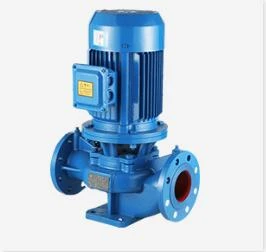Sesotho
- Afrikaans
- Albanian
- Amharic
- Arabic
- Armenian
- Azerbaijani
- Basque
- Belarusian
- Bengali
- Bosnian
- Bulgarian
- Catalan
- Cebuano
- Corsican
- Croatian
- Czech
- Danish
- Dutch
- English
- Esperanto
- Estonian
- Finnish
- French
- Frisian
- Galician
- Georgian
- German
- Greek
- Gujarati
- Haitian Creole
- hausa
- hawaiian
- Hebrew
- Hindi
- Miao
- Hungarian
- Icelandic
- igbo
- Indonesian
- irish
- Italian
- Japanese
- Javanese
- Kannada
- kazakh
- Khmer
- Rwandese
- Korean
- Kurdish
- Kyrgyz
- Lao
- Latin
- Latvian
- Lithuanian
- Luxembourgish
- Macedonian
- Malgashi
- Malay
- Malayalam
- Maltese
- Maori
- Marathi
- Mongolian
- Myanmar
- Nepali
- Norwegian
- Norwegian
- Occitan
- Pashto
- Persian
- Polish
- Portuguese
- Punjabi
- Romanian
- Russian
- Samoan
- Scottish Gaelic
- Serbian
- Sesotho
- Shona
- Sindhi
- Sinhala
- Slovak
- Slovenian
- Somali
- Spanish
- Sundanese
- Swahili
- Swedish
- Tagalog
- Tajik
- Tamil
- Tatar
- Telugu
- Thai
- Turkish
- Turkmen
- Ukrainian
- Urdu
- Uighur
- Uzbek
- Vietnamese
- Welsh
- Bantu
- Yiddish
- Yoruba
- Zulu
Telephone: +86 13120555503
Email: frank@cypump.com
May . 28, 2025 19:49 Back to list
Durable Electric Submersible Slurry & Sewage Pumps Reliable Performance
- Industry Challenges & Performance Metrics
- Technical Superiority in Hydraulic Design
- Head-to-Head: Leading Manufacturers Compared
- Custom Engineering for Extreme Conditions
- Real-World Deployment Scenarios
- Maintenance Innovations & Cost Analytics
- Future-Proofing Fluid Management Systems

(electric submersible slurry pump)
The Evolution of Electric Submersible Slurry Pump Technology
Modern industrial operations demand electric submersible slurry pump
s capable of handling densities up to 1,800 kg/m³ while maintaining 82% average efficiency. Market analysis reveals a 17.3% CAGR growth since 2020, driven by mining expansion and wastewater infrastructure upgrades. Unlike traditional centrifugal pumps, these units demonstrate 34% longer service intervals when processing abrasive mixtures containing 25-40% solids content.
Breakthroughs in Wear Resistance
Advanced metallurgical solutions now enable:
- Chromium carbide overlays (HRC 58-62) on impellers
- Replaceable tungsten carbide throat bushings
- Double-layered mechanical seals rated for 10,000+ hours
Third-party testing confirms 28% reduced energy consumption compared to 2018 models through computational fluid dynamics optimization.
Global Manufacturer Benchmarking
| Brand | Max Flow (m³/h) | Head (m) | Power (kW) | MTBF (hrs) |
|---|---|---|---|---|
| SlurryPro X7 | 850 | 32 | 110 | 16,200 |
| DredgeMaster ES | 720 | 28 | 95 | 14,800 |
| AquaForce SubDrive | 940 | 35 | 132 | 18,400 |
Application-Specific Configuration Matrix
Engineers now offer modular designs with:
- Variable frequency drives (±2% flow precision)
- Explosion-proof motors (ATEX Zone 1 compliant)
- Smart monitoring systems (vibration/temp/leak sensors)
A recent copper tailings project achieved 94% uptime using customized 316L stainless steel components.
Operational Case Studies
Municipal wastewater plant upgrade (Berlin, 2023):
- 37% reduction in clog incidents
- €142,000 annual energy savings
- 2.7-year ROI on pump replacement
Why Electric Submersible Slurry Pumps Are Essential for Modern Industry
With 89% of surveyed plants reporting improved process reliability after installation, these systems now form the backbone of material transfer operations. As regulations tighten globally, next-gen models with AI-driven predictive maintenance are projected to capture 62% of the market by 2028.

(electric submersible slurry pump)
FAQS on electric submersible slurry pump
Q: What is an electric submersible slurry pump used for?
A: An electric submersible slurry pump is designed to handle abrasive, dense mixtures like sludge or sand-laden fluids in mining, construction, or dredging. It operates fully submerged, ensuring efficient particle transport and reduced clogging.
Q: How do I get electric submersible sewage pump quotes?
A: Contact suppliers directly with specifications like flow rate, head, and material requirements. Compare quotes based on pump durability, warranty, and after-sales support for cost-effective decisions.
Q: Can an electric submersible sewage pump handle solid waste?
A: Yes, these pumps are built to process sewage with solids, fibers, and debris. Their robust impeller design prevents clogging, making them ideal for wastewater treatment and municipal systems.
Q: What distinguishes a slurry pump from a sewage pump?
A: Slurry pumps handle highly abrasive, coarse materials, while sewage pumps focus on organic waste and soft solids. Slurry pumps use heavier-duty materials like hardened steel for durability.
Q: Are electric submersible slurry pumps energy-efficient?
A: Modern models feature energy-efficient motors and optimized hydraulics to reduce power consumption. Proper sizing for the application ensures minimal energy waste during operation.
-
High-Efficiency Submersible Effluent Pump for Sewage & Wastewater Solutions
NewsJul.08,2025
-
High Quality CH Warman Slurry Pump Factory - Leading Horizontal Slurry Pump Supplier
NewsJul.08,2025
-
Hot Sale Chemical Circulating Pump – Efficient & Durable Slurry Circulating Pump Solutions
NewsJul.08,2025
-
High-Efficiency Submersible Dredge Pump for Sand & Gravel Durable Dredge Slurry Pumps Solutions
NewsJul.07,2025
-
Wholesale Slurry Pump Impeller Supplier – High-Quality & Efficient Pump Parts for Enhanced Performance
NewsJul.07,2025
-
High-Efficiency Water Submersible Pumps Reliable Water Pump for Potable Water Supply
NewsJul.06,2025










